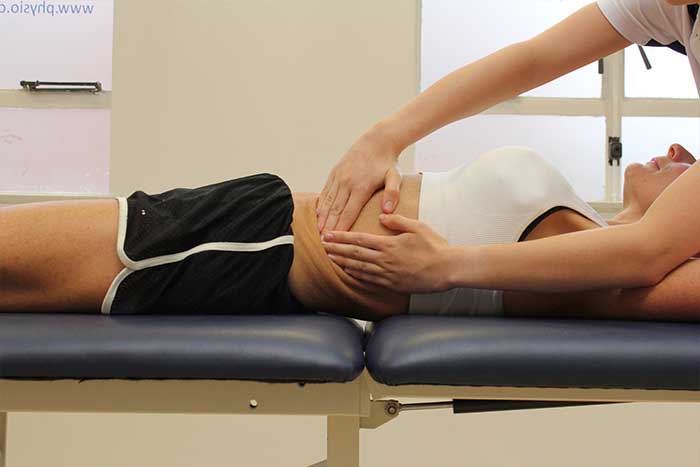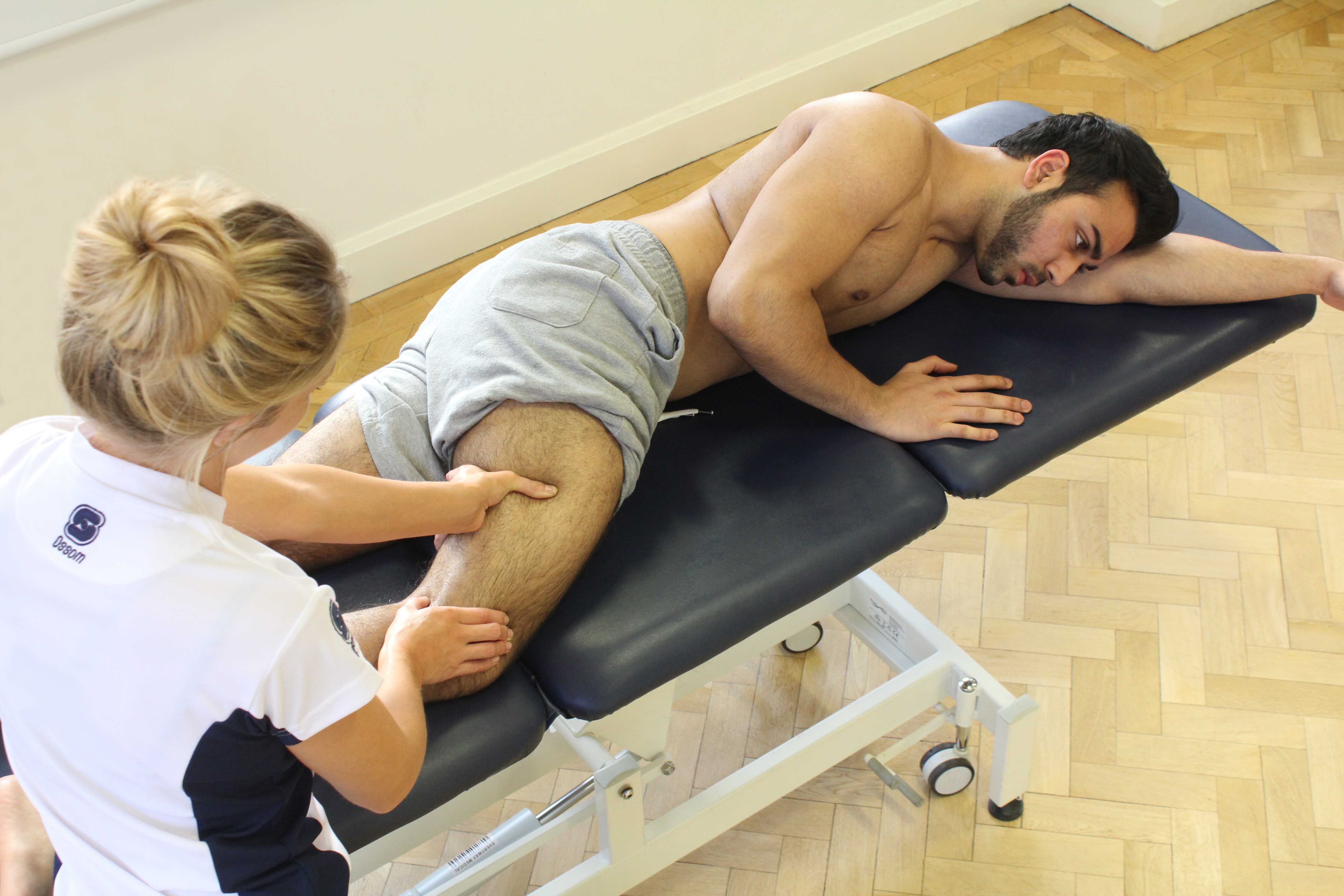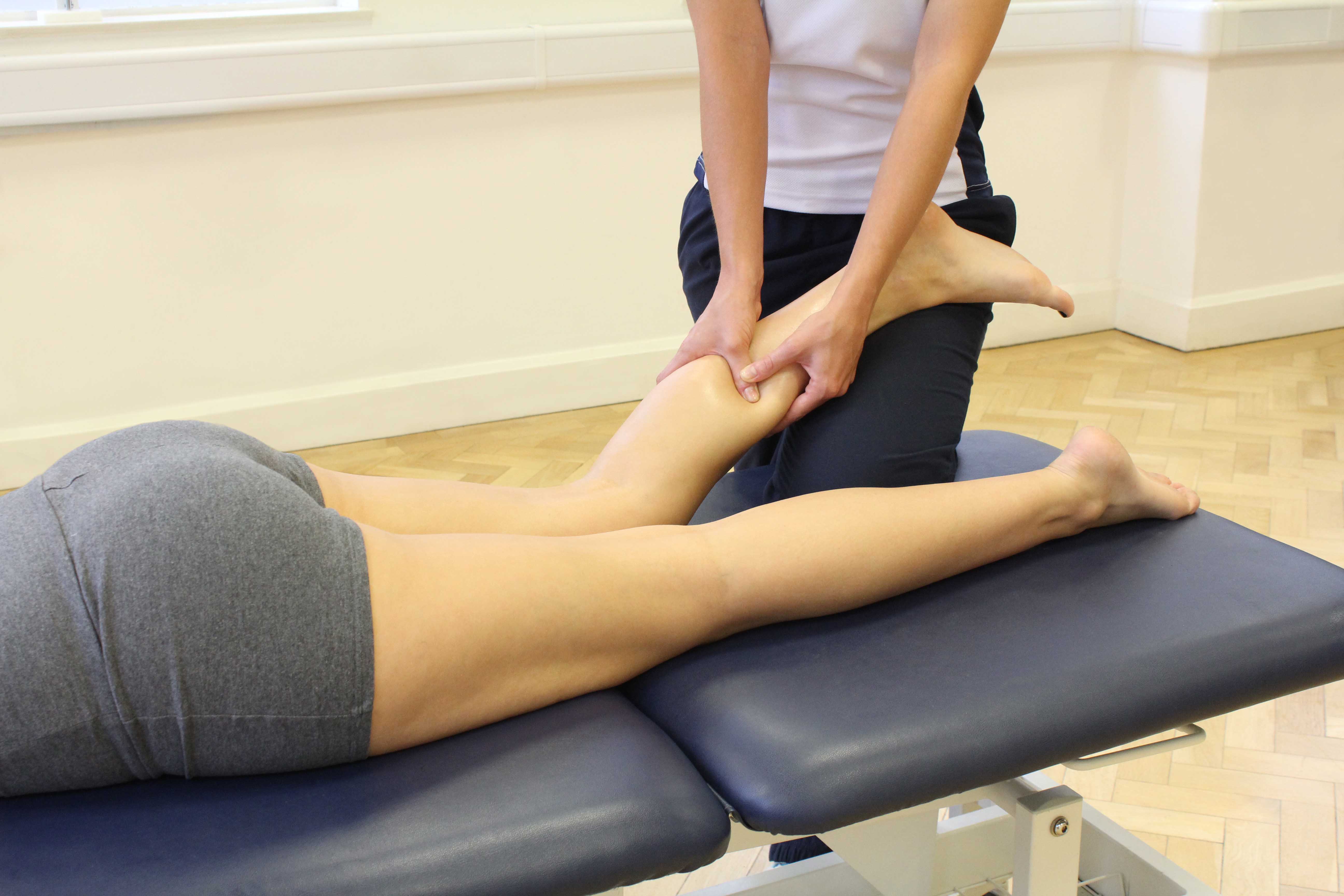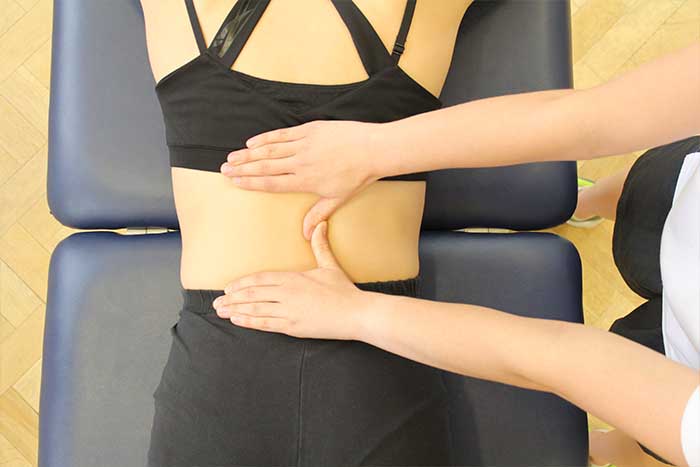Deep strokes are an effective and beneficial massage technique. Deep strokes are performed along the direction of muscle fibres. Deep strokes can be performed over many body parts and are used to increase tissue elasticity and aid relaxation. Massage therapists working at Physio.co.uk can use deep strokes as an effective massage technique to treat a range of conditions.
What are deep strokes?
Deep strokes can be used as part of many different massage types, for example, Swedish, therapeutic and deep tissue. Deep strokes are performed along the same direction of the muscle fibres. Deep strokes can be performed with the palm of the hand and/ or the forearm. Pressure during the strokes should be deep and reaching underlying muscle structures. Deep strokes are used to lengthen and mobilise soft tissue and help improve function of the joints.

When are deep strokes used?
Deep strokes are used to help on many circumstances. These circumstances include:
 Above: Deep tissue massage on vastus lateralis muscle
Above: Deep tissue massage on vastus lateralis muscleDeep strokes can be used within a relaxing massage. Deep strokes can help increase the temperature of the body and stimulate the parasympathetic nervous system. The friction applied to the skin through the strokes helps to increase the temperature of the soft tissues. Increasing the temperature of the soft tissues allows muscles to relax. Deep strokes performed gently onto the muscles can also stimulate the parasympathetic nervous system. The parasympathetic nervous system is responsible for stimulating the rest response. The parasympathetic allows the body to relax and feel a sense of calmness. Emotions such as anxiety and stress are decreased when the parasympathetic nervous system is stimulated.
Deep strokes can also be an effective massage technique to DOMS. DOMS can occur in the muscles after intense or strenuous exercise that the body is not used too. The symptoms of DOMS include fatigue, tightness and muscle soreness. Muscle soreness is the cause of microscopic tearing of the muscle fibres. Tearing can be associated with inflammation in the muscle which causes pain. Deep strokes help reduce tightness and pain by increasing temperature of the muscles, reducing inflammation and removing acids and toxins from out of the tissues. Treating DOMS with massage can improve muscle recovery and allows participation in exercise to be continued.
What are the physiological effects of deep strokes?
Massage can produce many important physiological effects on the body. The physiological effects of deep strokes include:
 Above: Deep tissue massage on soleus muscle
Above: Deep tissue massage on soleus muscleDeep strokes can help increase venous return. Venous return is the amount of blood returning back to the heart. The application of strokes can be performed in an upwards direction towards the heart. This type of deep strokes increases the blood circulation and moves it towards the direction of the heart. Increased venous return is beneficial to improving blood circulation.
Deep strokes can also increase temperature of the soft tissues. The friction against the skin causes vasodilation and capillarisation in the blood. Vasodilation and capillarisation is the increase of size of blood vessels and the amount of blood cells in the blood flow. The increase of temperature promotes relaxation, relieves tight muscles and can decrease pain.
Deep strokes increase the tissue elasticity. Deep strokes are performed in the direction of muscle fibres. By applied deep pressure, the fibres can be stretched and elongated. An increase of tissue elasticity is important to prevent tightness and increase flexibility.

Benefits of deep strokes
A deep stroke massage technique has many benefits. Some benefits of deep strokes include:
Deep strokes can help improve recovery. Deep strokes are commonly used within a massage treatment during the rehabilitation stage of injury or post-surgery. Deep strokes can treat tight muscles and help decrease pain. After injury or surgery soft tissues can become tight and lose their normal function. Deep strokes can increase the blood circulation which can help in the healing of damaged tissues. Deep strokes can also increase the tissue elasticity and reduce tight tissues such as scar tissue or adhesions.
Deep strokes can help decrease pain. Pain can occur for many reasons. Deep strokes can help decrease pain by interrupting the pain cycle, releasing hormones, removing toxins and waste products from out the body and increasing circulation. The friction of massage onto a painful area can interfere with pain signal pathways to the brain. Reducing pain signals to the brain stops pain from being registered. Deep massage strokes also stimulate the release of hormones producing feelings of euphoria and a sense of well-being. The endorphins produced can work so powerful that they manage to mask pain.
Deep strokes can also help reduce swelling. Deep strokes performed to increase lymphatic drainage can also help treat any swelling of excess fluid. Swelling that occurs from injury can be treated by applying pressure to the area and help drain away any fluid.
Deep strokes performed as part of a relaxation massage can help to relax the body physically and mentally. Deep strokes can be performed slowly which increases temperature and stimulates the parasympathetic nervous system. Increased temperature allows the muscles to relax. Increasing relaxation is an effective benefit to improving mood and decreasing emotions such as stress and anxiety.
Common body parts treated by deep strokes
There are many common body parts that can be treated with deep strokes. Common body parts treated by deep strokes are:
Deep strokes can also be performed on other areas of the body and be effective to increase venous return, reduce pain and aid relaxation.
Summary
Deep strokes are performed with pressure onto muscles. Deep strokes are performed in a specific direction along the muscle fibres. Deep strokes are used to relax muscles and help decrease DOMS. There are many benefits of deep strokes that include improved recovery, decreased pain, reduced swelling and relaxation. Deep strokes can be performed on many parts of the body including shoulder, arm, upper back, lower back, thigh and calf. Massage therapists working at Physio.co.uk can use deep strokes as an effective massage technique to treat a range of conditions.
How can I arrange receiving a deep stroke massage technique?
The easiest way to arrange receiving a deep strokes massage treatment at Physio.co.uk is to email us at office@physio.co.uk or call us on 0800 033 7800.
Alternatively if you have any questions please feel free to contact us.
We offer a 7 day service and provide home and clinic appointments.

 0330 088 7800
0330 088 7800



































